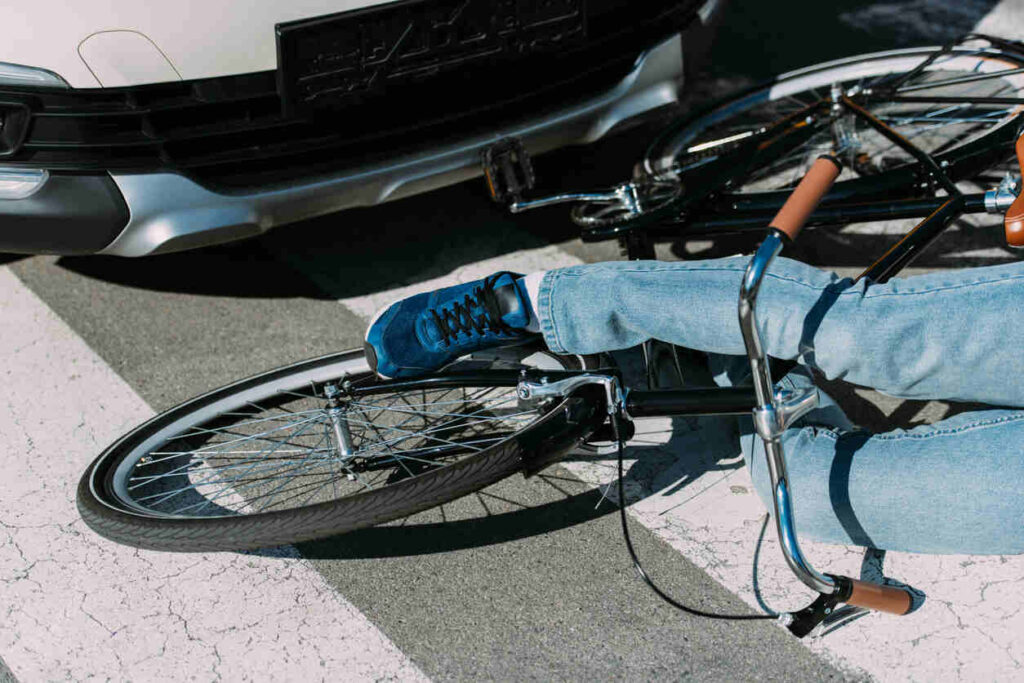Posted on Tuesday, July 22nd, 2025 at 7:30 am
Chicago has made visible efforts in recent years to support cycling, with the installation of dedicated bike lanes and Divvy stations and a push toward more sustainable transportation. However, despite these improvements, the city still has a mixed reputation regarding bike safety. For cyclists navigating busy streets, the risks remain high, and when a driver strikes a cyclist and flees the scene, the consequences can be devastating.
At Wallace Miller, we represent injured cyclists in Chicago and throughout Cook County who are navigating the aftermath of hit-and-run crashes. These incidents often involve serious injuries, overwhelming medical bills, and a consuming sense of injustice.
If the driver has fled, you may not know where to turn, but legal options do exist. Our attorneys are here to help you understand your rights, your recovery options, and the steps to take immediately after a hit-and-run bicycle collision in Illinois.

Step 1: Call the police and report the hit-and-run
If you’ve been struck by a vehicle while riding your bike and the driver fails to stop, call 911 right away. Even if you’re unsure whether you’re seriously hurt, it’s critical to have law enforcement respond to the scene. When officers arrive, they can document the crash, take witness statements, and begin searching for surveillance footage or traffic cameras that may help identify the driver.
The police report also becomes an essential part of your legal case or insurance claim. It creates an official record of a hit-and-run incident and establishes the time, location, and other key facts that may not be available later.
If you’re able, provide any information you can about the vehicle: color, make, model, license plate digits, or direction it fled. But even if you didn’t see the car clearly, still make the report. Many hit-and-run drivers are located later through footage, license plate readers, or tips.
Step 2: Secure evidence at the scene, if you can
Depending on your condition and the situation, it may be possible to preserve key evidence before it is lost or destroyed. Photos or videos taken immediately after a crash can serve as powerful support for your claim, even if the driver isn’t found.
Try to gather:
- Photos of your injuries, your bicycle, and any damage to your gear.
- Images of the street, intersection, bike lane, or skid marks.
- Photos of nearby traffic cameras or private surveillance cameras.
- Contact information for anyone who witnessed the crash.
If you’re unable to do this yourself, ask a bystander for help. The more you’re able to document at the scene, the better equipped your legal team will be to reconstruct what happened and determine how to pursue compensation.
Step 3: Seek medical care and document your injuries
Some injuries from bicycle crashes may be obvious—fractures, deep cuts, and head trauma. Others, like internal injuries or concussions, may not surface until hours or days later. Regardless of how you feel in the moment, it’s essential to get medical attention as soon as possible.
This protects your health, but it also protects your case. Medical records created right after the incident can connect your injuries to the crash. This becomes especially important in hit-and-run cases, where the driver may never be identified and insurance coverage may need to come from your policy.
Follow all treatment instructions and attend follow-up appointments. The more detailed your medical records, the harder it is for an insurance company to dispute your injuries.
Step 4: Understand your insurance coverage—even if you were on a bike
If the hit-and-run driver is never found—or is found but has no insurance—you may still be able to pursue compensation through your auto insurance policy. This surprises many cyclists, but in Illinois, uninsured motorist (UM) coverage applies even when you’re not in your car, including when you’re riding a bike and struck by a vehicle.
Here’s how it works:
- Illinois requires all drivers to carry UM coverage with minimum limits of $25,000 per person and $50,000 per accident. This means your insurance can pay up to $25,000 for injuries to one person and up to $50,000 total if more than one person is injured in the same accident.
- If you purchased more than the minimum UM coverage, your policy likely includes underinsured motorist (UIM) coverage as well.
- UM and UIM coverage can help pay for your medical bills, lost wages, pain and suffering, and other damages if the at-fault driver lacks insurance or if they’re never identified.
This means that even if the driver fled and hasn’t been caught, you may still have a valid personal injury claim through your policy. Wallace Miller can help you review your coverage, file a claim, and advocate for you if your insurer attempts to delay or deny payment.
Step 5: Talk to an Experienced Chicago Bicycle Injury Lawyer
Hit-and-run crashes are complex, emotionally charged, and often frustrating for victims who feel like justice may never come. That’s where we come in. At Wallace Miller, our team has extensive experience handling hit-and-run bicycle injury claims in Chicago.
We know how to investigate these cases, track down evidence, and pursue every available path for compensation—even when the driver is unknown. Call 331-425-8022 or begin your free case evaluation online today to learn more about how we can help.
